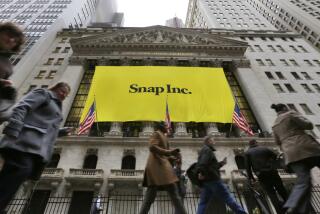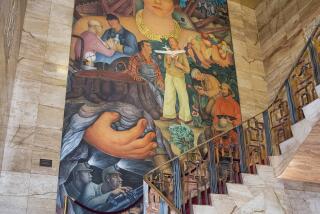A Dozen Who Shaped the 80s
California’s image as a pacesetter held up fairly well in the 1980s in the world of business and economics. Californians were a force for dramatic change.
Some achieved change on a grand scale--inspiring a revolution in economic policy or transforming corporate finance. Some of the change may seem minor, but it altered our daily routines and our life styles. Some business people built firms that are monuments to America’s spirit of enterprise; others brought companies to ruin and became symbols of corporate recklessness.
Here is a sampling of California residents who gave American business a 1980s makeover--making it better, or worse, or just more fun.
STEVEN P. JOBS
If the computer industry has acquired a mythology, Steven P. Jobs certainly has become its most legendary figure. With high school buddy Steve Wozniak, Jobs ushered in the era of the personal computer, now a multibillion-dollar industry that has revolutionized the way people work and communicate.
Jobs and his Apple Computer Co., which was launched in his parents’ garage, introduced the Apple II in the late 1970s and watched as it became the best-selling personal computer ever built. In 1984, an Apple design team led by Jobs unveiled the Macintosh, which set a standard for user-friendly, easy-to-understand graphics that is imitated by competitors throughout the PC industry.
Although the 1980s were prosperous and fulfilling for Jobs, they were not without major disappointments. In 1985, after a bitter power struggle with John Sculley, his handpicked successor at Apple’s helm, Jobs was forced out of the company he founded.
After cloistering himself in his country mansion on the fringes of the Silicon Valley where he grew up, Jobs emerged with plans for his next venture. Named Next Inc., and with backers that include the likes of H. Ross Perot and the Japanese industrial giant Canon, the company unveiled its new machine in 1988 amid unprecedented hoopla and media frenzy.
The machine is intended to bring an unequaled combination of power and ease of use to the desktops of office workers and university researchers. And because of its creator, its sleek black styling and its state-of-the-art graphics and sound, the machine has attracted the kind of attention that only Steve Jobs can command.
But it remains to be seen in the 1990s whether Jobs and Next can re-create his successes of the 1980s, or whether the new machine is merely what one wag termed a “Swiss army knife for propeller heads.”






